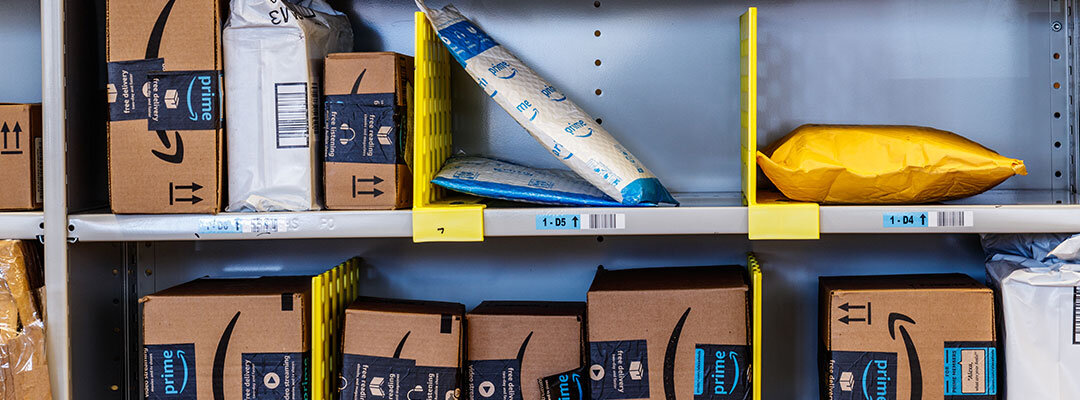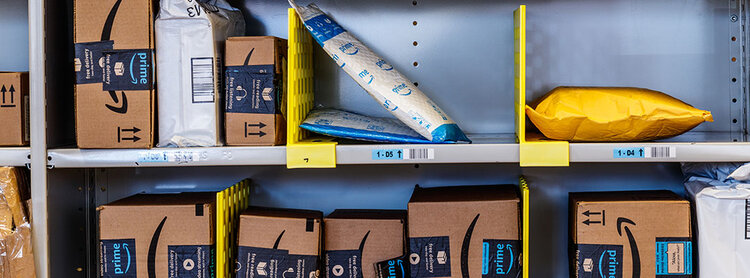
Inventory management has been an essential part of business long before the days of Amazon, only to evolve through different mediums of retail and e-commerce. The age-old practice of forecasting (or fortune-telling as it should really be called) when it comes to product demand still boils down to the same question: “How do we maintain enough inventory to stay in stock, while avoiding the liability of having excess?”
The Amazon Inventory Dilemma
So what makes inventory management on Amazon a much higher risk compared to traditional e-commerce platforms?
The most important thing to understand about Amazon is that their product is not a physical item whatsoever, the product that Amazon.com is selling is a curated customer experience. In order to provide this customer experience, sellers are rewarded when they follow marketplace guidelines and utilize Amazon’s selling features, but are sometimes harshly reprimanded when they don’t – especially when it damages the customer experience. When a customer comes to purchase or repurchase a product and it is out of stock, not only does this provide a poor experience for the customer, but they are then forced to search off Amazon to purchase the desired item. Bad for you as a seller, and more importantly, bad for Amazon.
The way Amazon handles this situation is by leveraging their algorithm in relation to your product’s BSR (Base Sellers Rank). Because you have gone out of stock and effectively disproved your credibility with Amazon, your BSR can take a substantial negative hit. So not only are you going to lose sales while you are out of stock, but once you replenish your inventory, you are less likely to sell at the rate you previously had. Pair this with a competitor who is eager to take your place in the market and it can have an exponential impact on sales.
Assuming you are utilizing Amazon FBA (Amazon Prime provides the best customer experience), the simple solution would just be to send in as much inventory as you can to ensure you never go out of stock, however, this will of course incur costly monthly storage fees, long-term storage fees if it takes longer than 12 months to sell, and removal fees if you ever want to remove the product from the FBA warehouse.
The Sweet Spot
Now that we know the risks of having too little inventory and the costs of having too much, how do we determine the optimal amount when sending inventory into Amazon FBA?
In order to find our sweet spot, there are a few things we need to know:
1. Lead Times
If you were to run out of stock today, how many days would it take you to have inventory back in the FBA warehouse, ready for sale?
Don’t forget to take into account that you may first be put into a queue with your manufacturer before your product starts getting made, inspected, shipped, cleared through customs, and delivered to the FBA warehouse. It will then take anywhere from 3-5 days for Amazon’s employees to scan your items and make them available, but always plan for a little more time.
2. Historical Sales Data
What have your average daily sales been in the last 30-90 days? Is it trending up or down?
If you have a new-to-market product, using 3rd party software to estimate competitor sales may be the best data you can find. It will be a lot more guesswork, but if you have done proper market research before deciding to launch this product on Amazon you should have a sense of where you fall in the market. Just keep in mind that competitors already have sales and review history, while you don’t.
3.Seasonal Trends
Are there seasonal trends that you need to account for? This includes high volume days like Prime Day or Black Friday/Cyber Monday, even potential marketing campaigns that you may be preparing for externally.
As with the average daily sales, if you have a new product it will be worth researching the historical sales data of competitors. Many 3rd party softwares will show competitors’ last 30-day sales volumes, and a historical chart for BSR. Utilize these tools to gauge how much additional traffic might be coming in for the products in your market during different times of the year.
The Formula
Once you have an understanding of these things, you can use the following formula to understand the bare minimum for your inventory levels:
(Average Daily Sales x Lead Time) + Seasonal Forecast + Buffer = Minimum Inventory Level
For example:
100 (Ave. Daily Sales) x 30 (Lead Time in # of days) + 50% or 1500 units (last season showed 50% increase during upcoming season, so I can expect similar this season) + Buffer = 4500 units + Buffer
Using this formula you can generally assume that if your inventory levels have fallen below this amount, you can expect to go out of stock before your replenishment becomes available for sale again.
The “buffer” is determined by your financial restraints and gut feeling. If it’s a new product and you aren’t sure how it will perform, or you are tight on cash, the buffer might be closer to 2-3 weeks so you can assess your average daily sales within that time before making a replenishment order. On the other hand, sometimes it is worth spending a little more on storage fees to mitigate the risk of going out of stock.
A general rule that is often used, is replenishing to a 90-120 day supply. This is often going to give you enough runway for aggressive sales and advertising without as much risk of incurring long-term storage fees or removals if something goes wrong on your seller account or listing. If you currently have a 60-day supply in the warehouse, you would want to replenish another 60-90 day supply (accounting for the 30-day lead time before the replenishment order arrives). As long as you don’t let your inventory sink below the minimum levels, being subject to the harsh reprimand of Amazon’s algorithm shouldn’t be a concern of yours any longer.



